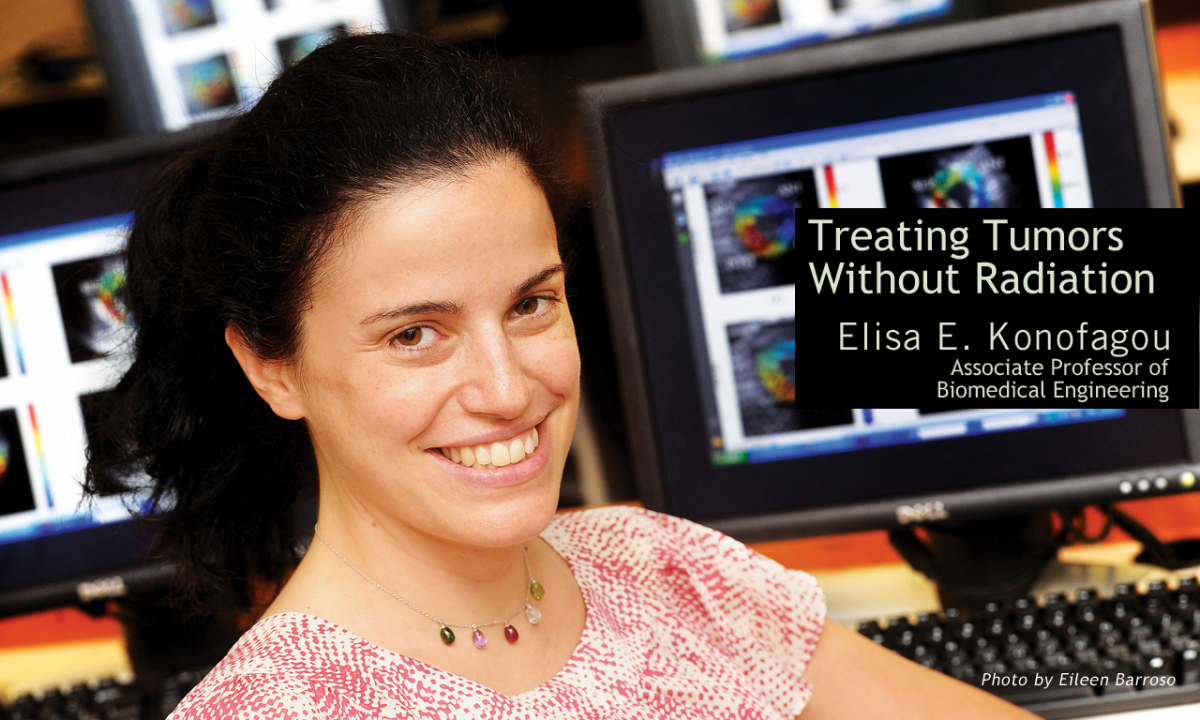Biomedical Engineering
351 Engineering Terrace, MC 8904
Phone: 212-854-4460
[email protected];
bme.columbia.edu
Biomedical engineering is an evolving discipline in engineering that draws on collaboration among engineers, physicians, and scientists to provide interdisciplinary insight into medical and biological problems. The field has developed its own knowledge base and principles that are the foundation for the academic programs designed by the Department of Biomedical Engineering at Columbia.
 The programs in biomedical engineering at Columbia (B.S., M.S., Ph.D., Eng.Sc.D., and M.D./Ph.D.) prepare students to apply engineering and applied science to problems in biology, medicine, and the understanding of living systems and their behavior, and to develop biomedical systems and devices. Modern engineering encompasses sophisticated approaches to measurement, data acquisition and analysis, simulation, and systems identification. These approaches are useful in the study of individual cells, organs, entire organisms, and populations of organisms. The increasing value of mathematical models in the analysis of living systems is an important sign of the success of contemporary activity. The programs offered in the Department of Biomedical Engineering seek to emphasize the confluence of basic engineering science and applied engineering with the physical and biological sciences, particularly in the areas of biomechanics, cell and tissue engineering, and biosignals and biomedical imaging.
The programs in biomedical engineering at Columbia (B.S., M.S., Ph.D., Eng.Sc.D., and M.D./Ph.D.) prepare students to apply engineering and applied science to problems in biology, medicine, and the understanding of living systems and their behavior, and to develop biomedical systems and devices. Modern engineering encompasses sophisticated approaches to measurement, data acquisition and analysis, simulation, and systems identification. These approaches are useful in the study of individual cells, organs, entire organisms, and populations of organisms. The increasing value of mathematical models in the analysis of living systems is an important sign of the success of contemporary activity. The programs offered in the Department of Biomedical Engineering seek to emphasize the confluence of basic engineering science and applied engineering with the physical and biological sciences, particularly in the areas of biomechanics, cell and tissue engineering, and biosignals and biomedical imaging.
Programs in biomedical engineering are taught by its own faculty, members of other Engineering departments, and faculty from other University divisions who have strong interests and involvement in biomedical engineering. Several of the faculty hold joint appointments in Biomedical Engineering and other University departments.
Courses offered by the Department of Biomedical Engineering are complemented by courses offered by other departments in The Fu Foundation School of Engineering and Applied Science, and by many departments in the Faculty of Medicine, the College of Dental Medicine, and the Mailman School of Public Health, as well as the science departments within the Graduate School of Arts and Sciences. The availability of these courses in a university that contains a large medical center and enjoys a basic commitment to interdisciplinary research is important to the quality and strength of the program.
Educational programs at all levels are based on engineering and biological fundamentals. From this basis,the program branches into concentrations of contemporary biomedical engineering fields. The intrinsic breadth of these concentrations, and a substantial elective content, prepare bachelor’s and master’s students to commence professional activity in any area of biomedical engineering or to go on to graduate school for further studies in related fields. The program also provides excellent preparation for the health sciences and the study of medicine. Graduates of the doctoral program are prepared for research activities at the highest level.
Areas of particular interest to Columbia faculty include biomechanics (Professors Ateshian, Guo, Hess, Morrison, and Nerurkar), cellular and tissue engineering (Professors Arinzeh, Correa, Danino, Hung, Kam, Leonard, Leong, Lu, Morrison, Sia, and Vunjak-Novakovic), auditory biophysics (Professor Olson), biomaterials (Professors Arinzeh, Correa, Danino, Hess, Kam, Leong, Lu, Sia, and Vunjak-Novakovic), biosignals and biomedical imaging (Professors Guo, Hillman, Jacobs, Juchem, Konofagou, Laine, Sajda, Vaughan, and Wang), neuroengineering (Professors Hillman, Jacobs, Konofagou, Laine, Morrison, Sajda, and Wang) and machine learning (Azizi, Laine, Sajda, Vickovic).
Facilities
The Department of Biomedical Engineering has been supported by grants obtained from NIH, NSF, DoT, DoD, New York State, numerous research foundations, and University funding. The extensive facilities that are at the Medical Center, Manhattanville, and Morningside campuses include teaching and research laboratories that provide students with unusual access to contemporary research equipment specially selected for its relevance to biomedical engineering. Another a undergraduate wet laboratory devoted to biomechanics and cell and tissue engineering, together with a biosignals and biomedical imaging and data processing laboratory. Each laboratory incorporates equipment normally reserved for advanced research and provides exceptional access to current practices in biomedical engineering and related sciences.
Research facilities of the Biomedical Engineering faculty include the Computational Cancer Biology Laboratory (Professor Azizi), the Synthetic Biological Systems Laboratory (Professor Danino), the Heffner Biomedical Imaging Laboratory (Professor Laine), the Laboratory for Intelligent Imaging and Neural Computing (Professor Sajda), the Bone Bioengineering Laboratory (Professor Guo), the Cellular Engineering Laboratory (Professor Hung), the Biomaterial and Interface Tissue Engineering Laboratory (Professor Lu), the Neurotrauma and Repair Laboratory (Professor Morrison), the Laboratory for Stem Cells and Tissue Engineering (Professor Vunjak-Novakovic), the Ultrasound and Elasticity Imaging Laboratory (Professor Konofagou), the Magnetic Resonance Scientific Engineering for Clinical Excellence Laboratory (Professor Juchem), the Microscale Biocomplexity Laboratory (Professor Kam), the Molecular and Microscale Bioengineering Laboratory (Professor Sia), the Laboratory for Functional Optical Imaging (Professor Hillman), the Cognitive Electrophysiology Laboratory (Professor J. Jacobs), the Nanobiotechnology and Synthetic Biology Laboratory (Professor Hess), the Raymond and Beverly Sackler Laboratory for Neural Engineering and Control (Professor Wang), the Morphogenesis and Developmental Biomechanics Lab (Professor Nerurkar), and the Laboratory for Nanomedicine and Regenerative Medicine (Professor Leong). These laboratories are supplemented with core facilities, including a tissue culture facility, a histology facility, a confocal microscope, an atomic force microscope, a 2-photon microscope, epifluorescence microscopes, a freezer room, biomechanics facilities, a machine shop, and a specimen preparation room.